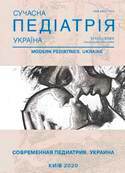The use of sulfasalazine in the treatment of immunoglobulin a (iga) vasculitis in pediatric practice
Keywords:
IgA-vasculitis, sulfasalazine, childrenAbstract
According to the last international conference on the nomenclature, diagnosis and treatment of vasculitis in Chapel Hill in 2012, Henoch—Schonlein purpura received a new name — IgA-vasculitis. It is believed that an increase in IgA synthesis is a compensatory mechanism in response to a developed inflammatory response. Basic therapy includes the use of antiplatelets, anticoagulant therapy, if medically required — glucocorticosteroids (GCS), cytostatics. Difficulties in diagnosis in the early stages and the likelihood of developing complications leaves Henoch—Schonlein purpura in the top of the current issues of pediatrics today. Henoch—Schonlein purpura is usually a self-limited disease with a benign course. Treatment of vasculitis is a complex task, especially in the presence of two or more combined syndromes. Recently, in the treatment of this disease the use of sulfasalazine has attracted the attention of doctors; however, reports of its use in children are limited.Aim. To attract the attention of pediatricians to the use of medicines that are not included in the basic therapy of IgA-vasculitis.
Clinical case. A clinical case of IgA-vasculitis in a child of 17 years is described. Based on the evaluation of history, clinical examination, laboratory and instrumental methods of examination and differential diagnosis, a diagnosis of IgA-vasculitis was made.
Conclusions. The use of sulfasalazine is effective in the treatment of IgA-vasculitis.
The research was carried out in accordance with the principles of the Helsinki Declaration. The study protocol was approved by the Local Ethics Committee of an institution. The informed consent of the patient was obtained for conducting the studies.No conflict of interest was declared by the authors.
References
Lyskina GA, Zinoviev GA. (2010). Some aspects of the development, course and treatment of Shonlein—Henoch disease in children. Pediatrics. 89;6: 132—136.
Nasonov EL. (2002). The use of sulfasalazine in rheumatology: new data. Ukrainian rheumatology journal. 2(8): 9—14.
Semenovih AG. (2008). The features and approaches of pharmacotherapy of the modern course of Shonlein—Henoch purpura in adults. PhD work. Moscow: 127.
Ting TV. (2014). Diagnosis and management of cutaneous vasculitis in children. Pediatr Clin North Am. 61(2): 321—46. Epub 2014 Jan 21. https://doi.org/10.1016/j.pcl.2013.11.007; PMid:24636649
Downloads
Issue
Section
License
The policy of the Journal “MODERN PEDIATRICS. UKRAINE” is compatible with the vast majority of funders' of open access and self-archiving policies. The journal provides immediate open access route being convinced that everyone – not only scientists - can benefit from research results, and publishes articles exclusively under open access distribution, with a Creative Commons Attribution-Noncommercial 4.0 international license (СС BY-NC).
Authors transfer the copyright to the Journal “MODERN PEDIATRICS. UKRAINE” when the manuscript is accepted for publication. Authors declare that this manuscript has not been published nor is under simultaneous consideration for publication elsewhere. After publication, the articles become freely available on-line to the public.
Readers have the right to use, distribute, and reproduce articles in any medium, provided the articles and the journal are properly cited.
The use of published materials for commercial purposes is strongly prohibited.

